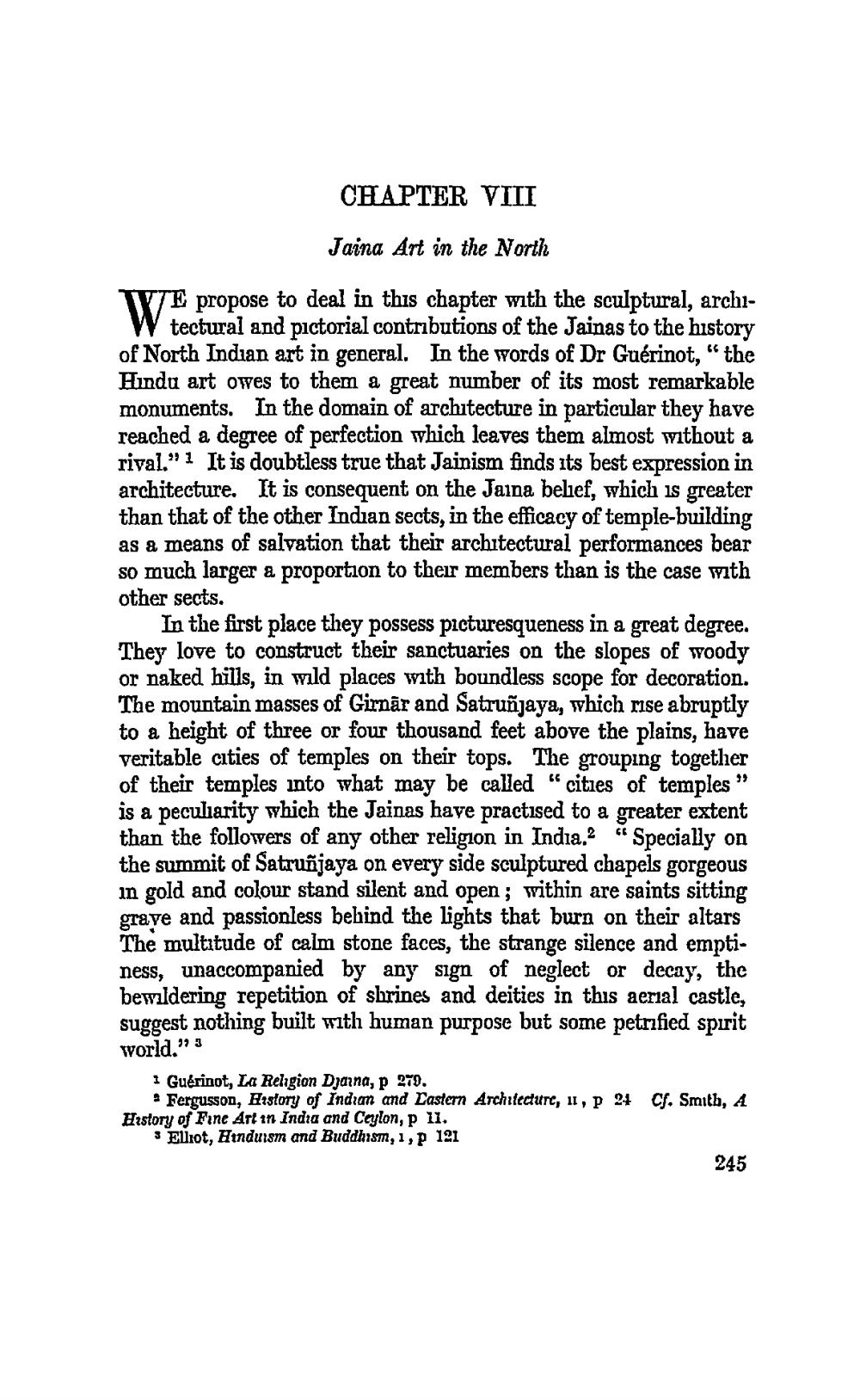________________ CHAPTER VIII Jaina Art in the North TVE propose to deal in this chapter with the sculptural, archi W tectural and pictorial contributions of the Jainas to the history of North Indian art in general. In the words of Dr Guerinot, "the Hindu art oves to them a great number of its most remarkable monuments. In the domain of architecture in particular they have reached a degree of perfection which leaves them almost without a rival." 1 It is doubtless true that Jainism finds its best expression in architecture. It is consequent on the Jaina belief, which is greater than that of the other Indian sects, in the efficacy of temple-building as a means of salvation that their architectural performances bear so much larger a proportion to their members than is the case with other sects. In the first place they possess picturesqueness in a great degree. They love to construct their sanctuaries on the slopes of woody or naked hills, in wild places with boundless scope for decoration. The mountain masses of Girnar and Satrunjaya, which rise abruptly to a height of three or four thousand feet above the plains, have veritable cities of temples on their tops. The grouping together of their temples into what may be called "cities of temples" is a peculiarity which the Jainas have practised to a greater extent than the followers of any other religion in India. "Specially on the summit of Satrunjaya on every side sculptured chapels gorgeous in gold and colour stand silent and open ; within are saints sitting grave and passionless behind the lights that burn on their altars The multitude of calm stone faces, the strange silence and emptiness, unaccompanied by any sign of neglect or decay, the bewildering repetition of shrines and deities in this aeral castle, suggest nothing built with human purpose but some petrified spirit world." 3 1 Guerinot, La Religion Djarna, p 270. * Fergusson, History of Indram and Lastern Architecture, 11, P 24 Cf. Smith, A History of Fine Art in India and Ceylon, p l. * Elliot, Hinduism and Buddh187, 1, 121 245




